At its core, a chiller is a refrigeration system designed to remove heat through a vapor-compression, absorption, or adsorption refrigeration cycle.
The primary objective is to cool a fluid or dehumidify air in an industrial or commercial setting.
Simply put, a chiller is a machine that cools things down. It removes heat from a liquid or a space and transfers it to a cooling medium, such as air or water.
Chillers are often used in buildings, factories, and various industrial processes to control temperature or provide a comfortable environment.
They work by using a refrigeration cycle to absorb heat and then release it elsewhere, effectively lowering the temperature of the area or object being cooled.
What is a chiller used for?
Chillers are versatile machines with a wide range of applications across various industries.
Understanding their diverse uses highlights their importance in maintaining efficiency and productivity.
Industrial Processes
In industrial settings, process chillers play a pivotal role in maintaining optimal temperatures for plastic molding, pharmaceutical manufacturing, and food processing. Consistent cooling is crucial for quality control and efficient production.
Air Conditioning
Perhaps the most ubiquitous application of chillers is in air conditioning systems. Commercial buildings, shopping malls, data centers, and even residential complexes rely on chillers to cool and dehumidify air, creating comfortable indoor environments.
Data Centers
The rise of digital technology has led to an increased demand for data centers. These facilities house numerous servers generating substantial heat. Chillers regulate the temperature and ensure the seamless operation of critical data infrastructure.
Medical Applications
In the healthcare sector, chillers are used for medical imaging equipment, laboratories, and pharmaceutical storage. Precise temperature control is essential to preserve medications, vaccines, and sensitive medical instruments.
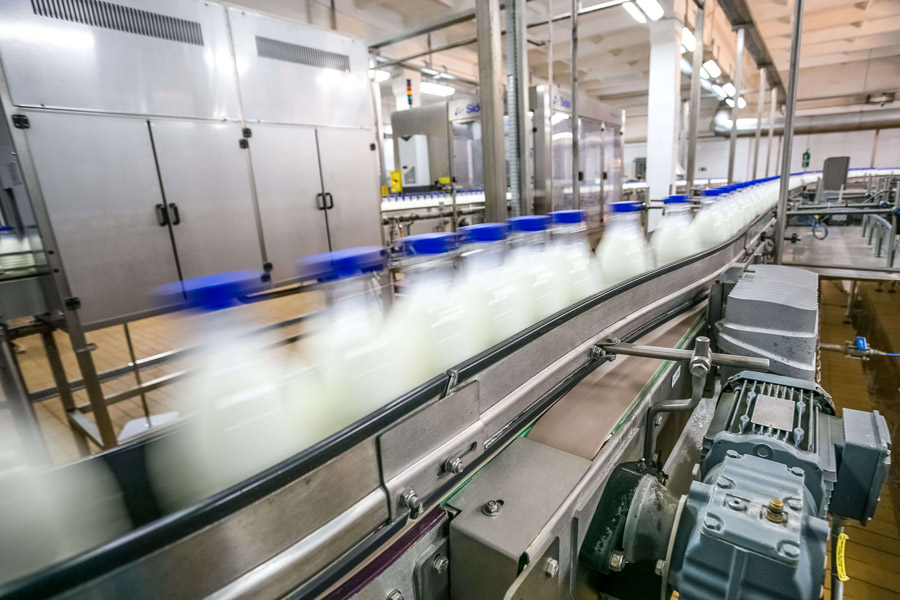
The basic types of chillers
Chillers are available in a variety of types and configurations, designed to cater to different cooling requirements. While there are numerous classifications of chillers, the two basic types are air-cooled chillers and water-cooled chillers.
Air-Cooled Chillers
Air-cooled chillers are the most common type found in commercial and industrial applications.
These chillers use ambient air to dissipate heat and cool the refrigerant inside the system.
They are typically self-contained units with a condenser coil, compressor, and evaporator all housed within a single package.
The condenser coil is equipped with a fan that draws air from the surroundings to remove heat from the refrigerant.
The advantage of air-cooled chillers is that they do not require a separate cooling tower or water source, which simplifies their installation and maintenance.
They are also less expensive upfront compared to water-cooled chillers.
However, they do require sufficient space for proper airflow and may consume more electricity than water-cooled alternatives.
Water-Cooled Chillers
Water-cooled chillers, as the name suggests, use water as the primary medium for heat transfer.
These chillers rely on a separate cooling tower to dissipate heat from the refrigerant.
The cooling tower enables the transfer of heat from the chiller’s condenser water loop to the atmosphere through the process of evaporation.
Water-cooled chillers are known for their high efficiency and ability to provide constant cooling, regardless of ambient temperature.
They are commonly used in applications where air-cooled chillers may not be sufficient, such as in larger-scale industrial processes or in areas with high ambient temperatures.
However, installing water-cooled chillers requires additional infrastructure, including cooling towers, pumps, and a reliable water source, making them more expensive and complex to set up.
How a chiller works
The working principle of a chiller involves the basic principles of thermodynamics and refrigeration.
The process starts with the compressor, which plays a crucial role in the chiller’s operation.
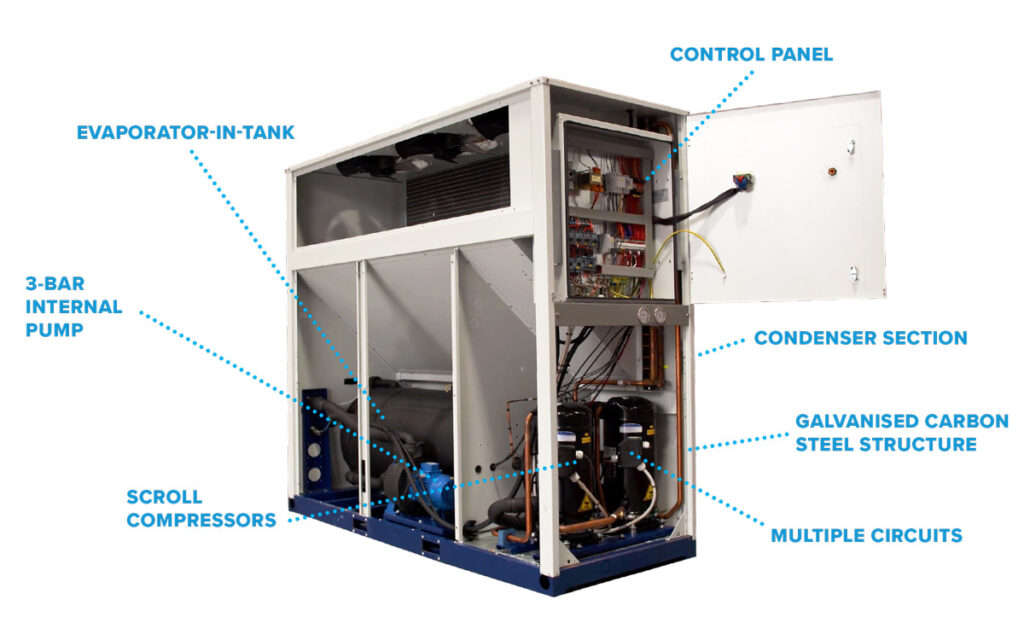
1. Compression
The process begins with the compression of a refrigerant gas. This is typically done by a compressor, which increases both the temperature and pressure of the gas.
As the refrigerant gas is compressed, it becomes a high-temperature, high-pressure vapor.
2. Condensation
The high-temperature, high-pressure vapor then flows into a condenser. In the condenser, the refrigerant releases heat to the surrounding environment and undergoes a phase change, transforming into a high-pressure liquid.
This heat release causes the refrigerant to shed the heat it absorbed in the previous step.
In air-cooled chillers, the condenser coil is equipped with a fan that blows ambient air over the coil, causing the refrigerant to release its heat to the air. In water-cooled chillers, the condenser transfers heat to a separate cooling water loop, which is then released through a cooling tower by the process of evaporation.
3. Expansion
The high-pressure liquid refrigerant then moves through an expansion valve or an expansion device. This valve rapidly reduces the pressure of the refrigerant.
As the pressure drops, the temperature of the refrigerant also decreases significantly.
4. Evaporation
The low-pressure, low-temperature liquid now enters the evaporator. In the evaporator, the refrigerant absorbs heat from the substance or area being cooled, causing it to evaporate and turn back into a vapor.
This absorption of heat from the surroundings is what provides the cooling effect.
5. Repeat the cycle
The refrigeration cycle is a continuous process.
The vaporized refrigerant is then returned to the compressor, where the cycle begins anew.
This continuous cycle ensures a consistent transfer of heat from the desired location to the chiller, which then releases the accumulated heat into the environment.
To maintain optimal cooling efficiency, chillers often use a refrigerant that has desirable thermodynamic properties, such as low boiling points and high heat capacities.
Common refrigerants used in chillers include R-134a, R-410A, and ammonia.
The choice of refrigerant depends on factors such as system requirements, environmental regulations, and safety considerations.
Control systems
The control system is a crucial component that manages and regulates the operation of the chiller. It includes sensors, monitors, and controllers that measure and adjust factors such as temperature, pressure, flow rate, and power consumption.
The control system ensures that the chiller operates within its optimal parameters, providing efficient and reliable cooling while protecting against any potential issues or malfunctions.
In addition to these primary components, a chiller may also include other auxiliary components such as pumps, fans, valves, and filters.
These components support the proper functioning of the chiller, ensuring smooth flow, adequate airflow, and clean operation.
The difference between process chillers and HVAC chillers
The main difference between process chillers and HVAC (Heating, Ventilation, and Air Conditioning) chillers lies in their intended applications and specific requirements.
Process chillers are designed to provide cooling for specific industrial processes and equipment.
They are typically used in manufacturing, food processing, pharmaceuticals, chemical processing, and other industries where precise and controlled cooling is essential.
Process chillers are built to handle large cooling loads and maintain stable temperatures in demanding conditions.
These chillers are often customised to meet the specific needs of the process or equipment they are cooling.
Key characteristics of process chillers include:
Capacity: Process chillers are designed to handle higher cooling capacities, often ranging from a few tons to hundreds or even thousands of tons.
Temperature Control: Process chillers are capable of delivering precise temperature control, ensuring the cooling requirements of the specific process or equipment are met accurately.
Process-Specific Design: Process chillers can be customized to meet the unique cooling requirements of the process or equipment they are serving. This may involve specialized materials, advanced controls, and specific safety considerations.
HVAC chillers, on the other hand, are primarily used for providing cooling in commercial buildings, residential complexes, and other HVAC applications.
These chillers are responsible for maintaining comfortable indoor conditions by cooling the air distributed through ductwork.
The main difference between process chillers and HVAC chillers lies in their intended applications and the specific requirements they need to fulfill.
Process chillers are tailored for industrial and specialised uses, focusing on precise temperature control and high cooling capacities.
What is a packaged chiller?
A packaged chiller, also known as a self-contained chiller or a compact chiller, is a type of chiller that is designed as a single, self-contained unit.
It combines all the necessary components of a chiller, including the compressor, condenser, evaporator, expansion valve, and control system, into a single package.
The main advantage of a packaged chiller is its compact and preassembled design.
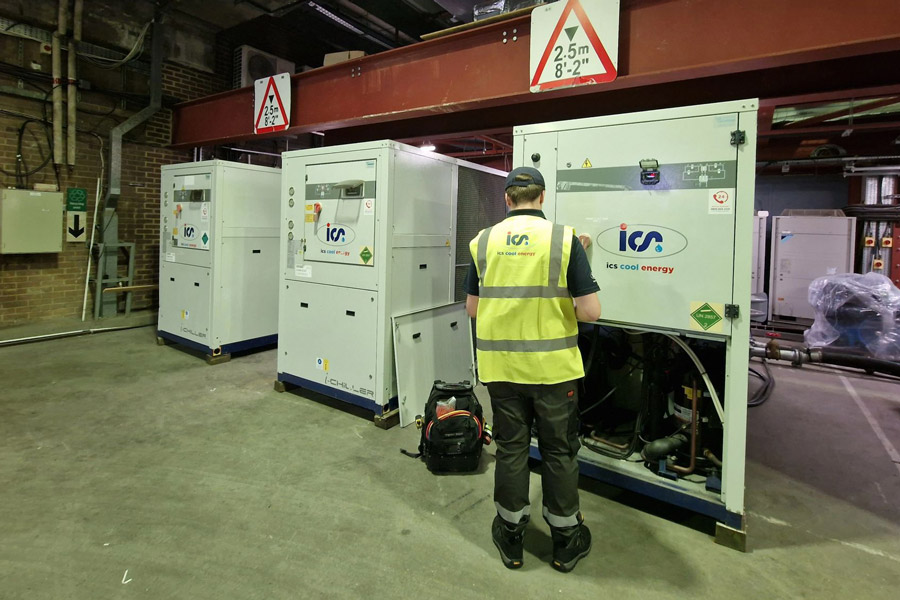
As a result, packaged chillers are easy to install, requiring minimal on-site assembly.
They are often factory-tested and ready for operation upon delivery.
This makes them a convenient and time-saving option for various applications.
Packaged chillers are available in various configurations, including air-cooled and water-cooled options.
Packaged chillers are commonly used in commercial and industrial applications where space is limited or where a plug-and-play solution is desired.
Due to their compact design, packaged chillers are relatively easy to maintain.
They often come with built-in diagnostic features and advanced controls that allow for efficient monitoring and troubleshooting.
Our industry-leading i-Chiller range are packaged chillers, which are specifically designed and built for process applications.
Chilling Challenges
As the global community intensifies efforts to combat climate change, the need for sustainable and energy-efficient cooling solutions becomes paramount.
Energy Efficiency
The energy efficiency of chillers has improved significantly over the years, thanks to advancements in technology.
Variable speed drives, advanced control systems, and high-efficiency components contribute to reducing energy consumption.
Regular maintenance and proper sizing of chillers also play a crucial role in optimising their efficiency.
Environmental Impact
The refrigerants used in chillers can have a significant environmental impact.
Many traditional refrigerants, such as chlorofluorocarbons (CFCs) and hydrochlorofluorocarbons (HCFCs), contribute to ozone depletion and are potent greenhouse gases.
The industry has been transitioning towards more planet-friendly refrigerants, such as hydrofluorocarbons (HFCs) with lower global warming potential, and natural refrigerants like ammonia.
The ongoing pursuit of technological advancements, coupled with a commitment to environmental responsibility, positions chillers as not just cooling devices but as key players in the global effort to combat climate change.
For more about sustainable cooling, you might like to read this article: https://www.icscoolenergy.com/lower-energy-costs-free-cooling/
Related Articles
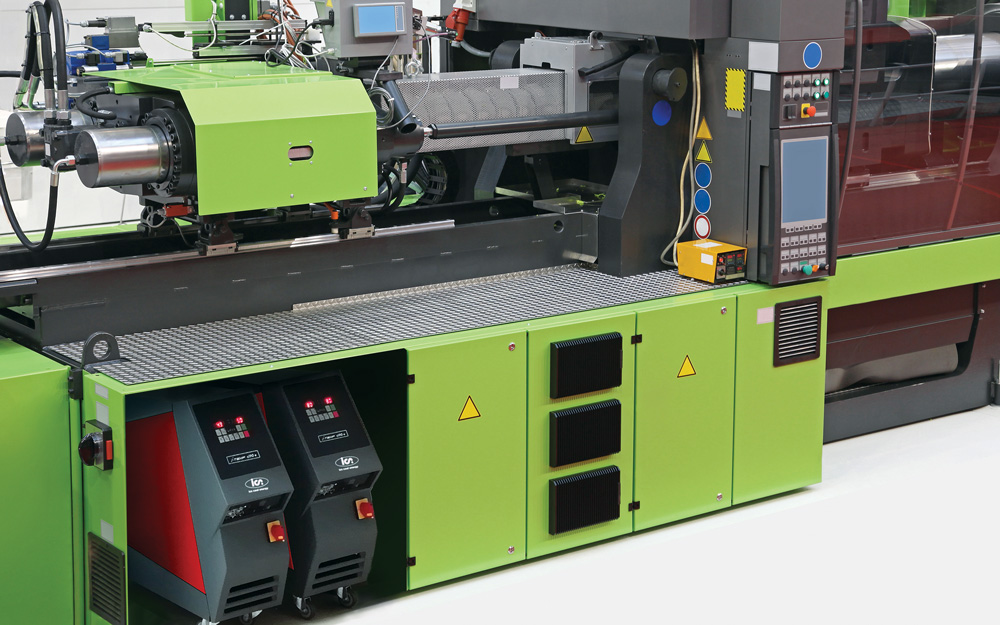
July 16, 2024
Is it time to replace your Temperature Control Unit?
Temperature control units (TCU) are crucial in maintaining the desired temperature in various manufacturing facilities. Like any appliance, temperature control units can show signs of...
Read More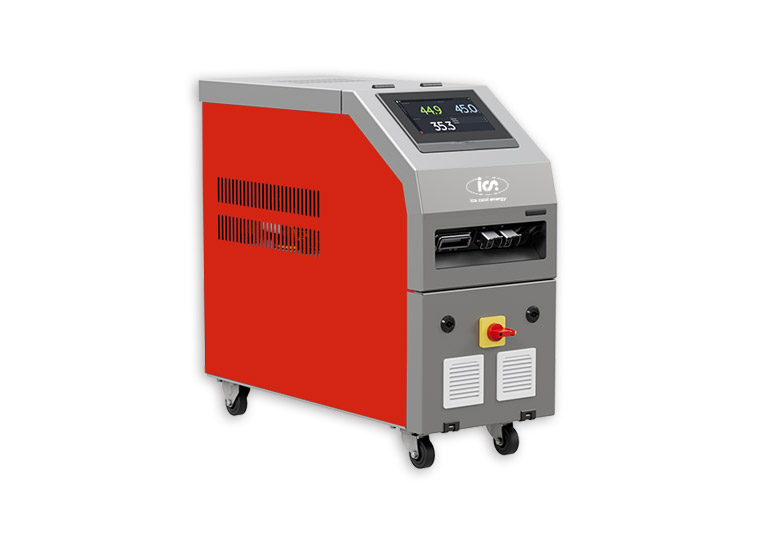
June 27, 2024
Introducing i-Temp Compact eco.line – A new standard in energy efficient temperature control
We are proud to announce the expansion of our i-TEMP temperature control units (TCU) portfolio with the introduction of the eco.line series. The new i-TEMP...
Read More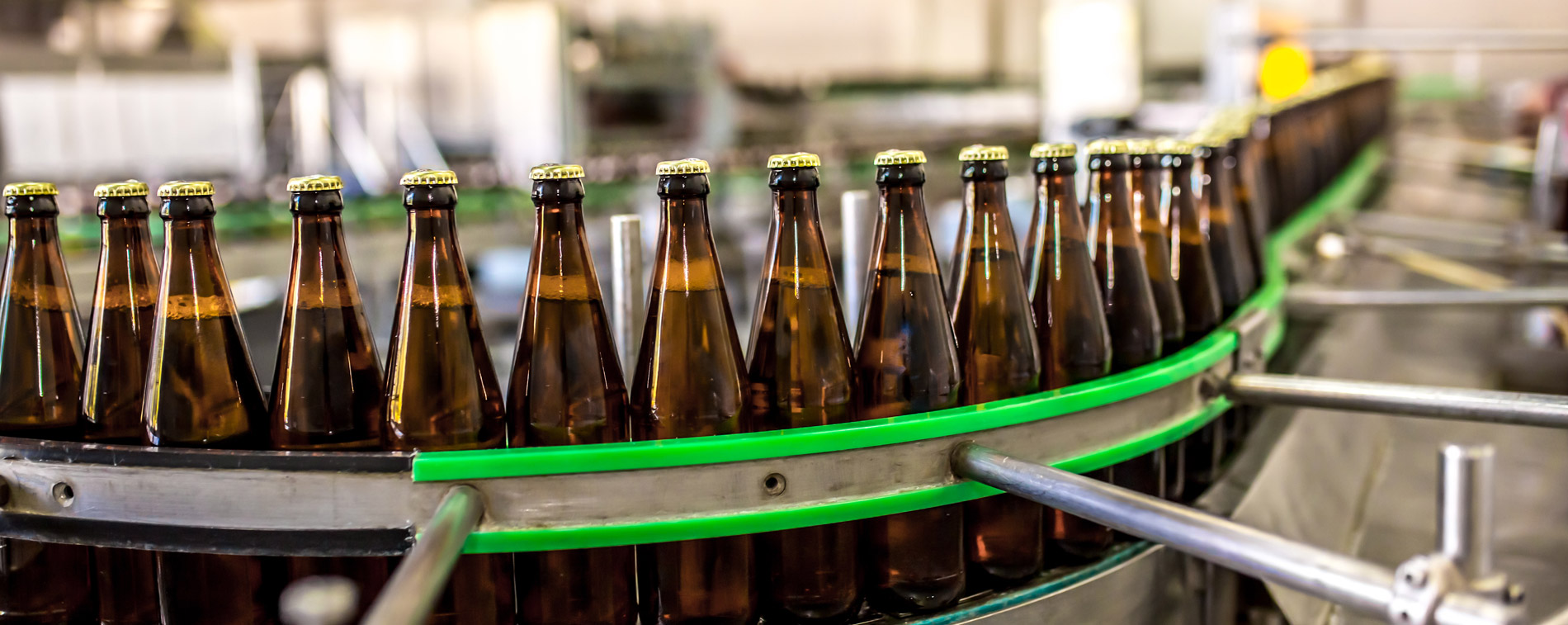
February 15, 2024
5 Tips To Reduce Your Process Cooling Energy Costs
Refrigeration accounts for a high proportion of overall site energy costs, most notably cooling for food, drink, chemical, and pharmaceutical processes where up to 90%...
Read More